- HOME
- RESEARCH
- Research Clusters
- Structure and Dynamics of Materials Using Quantum Beams and Data-Driven Sciences
RESEARCH
Structure and Dynamics of Materials Using Quantum Beams and Data-Driven Sciences
The aim of this research group is to investigate structure and dynamics of materials using quantum beam facilities in combination with data-driven sciences and computer simulations. Recent developments of quantum beam facilities, such as synchrotron radiation, x-ray free electron laser, and intense neutron sources, lead remarkable progresses in the quality of experimental data. In conjunction with them, new varieties of the data sets appear, such as two-dimensional images etc. and the corresponding data volumes explosively increase. The present task for researchers is how to extract scientifically valuable information from the experimental data of huge size in quantity but of still insufficient in quality. In this research unit, thus, we carry out state-of-art experiments such as scattering and imaging using quantum beam facilities, and analyze the data using, e.g., Inverse problem, Bayesian inference with Metropolis’ algorithm (reverse Monte Carlo modeling) and some others. Furthermore, the data-driven science such as Sparse modeling is a very promising tool for handling the data. To support the experimental results, first principles computer simulations are also indispensable.
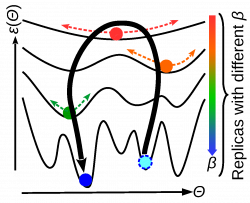
Cluster members
-
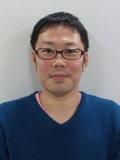 CoordinatorYoichi NAKAJIMA Website
CoordinatorYoichi NAKAJIMA WebsiteAssociate Professor
Faculty of Advanced Science and Technology, Kumamoto UniversityJapan -
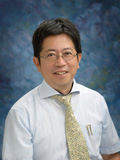
-
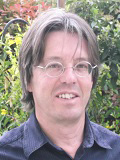
-
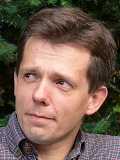
-
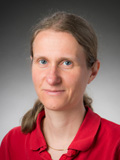
-
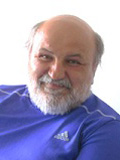 László PUSZTAI Website
László PUSZTAI WebsiteScientific Advisor
HUN-REN Wigner Research Centre for Physics
*IROAST Distinguished ProfessorHungary -
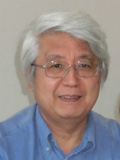 Masaru ANIYA Website
Masaru ANIYA WebsiteProfessor
Faculty of Advanced Science and Technology, Kumamoto UniversityJapan -
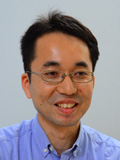 Masahiro HARA
Masahiro HARAAssociate Professor
Faculty of Advanced Science and Technology, Kumamoto UniversityJapan -
 Shinya HOSOKAWA
Shinya HOSOKAWAResearcher
Shimane UniversityJapan
Achievement
Publications
- 2025
-
-
- Structural and Dynamical Changes in a Gd-Co Metallic Glass by Cryogenic Rejuvenation
-
Acta Materialia, 284, 12616 (2025)
-
- 2024
-
-
- Outstanding Properties of the Hydration Shell around β-d-Glucose: A Computational Study
-
ACS Omega, 9, 18, 20331–20337 (2024)
-
- Local- and Intermediate-range Partial Structure Study of As–Se Glasses
-
Journal of the Physical Society of Japan 93, 1, 014601 (2024)
-
- Lithium Ion Transport Environment by Molecular Vibrations in Ion-Conducting Glasses
-
Energy & Environmental Materials, 7 (3), e12612 , 2024
*Added volume number on May 24, 2024
-
- 2023
-
-
- Evolution of the hydrogen-bonded network in methanol-water mixtures upon cooling
-
Journal of Molecular Liquids, 386, 122494, 2023
-
- 2022
-
-
- Topological descriptors and Laplace spectra in simple hydrogen bonded systems
-
Journal of Molecular Liquids, 363, 119860 (2022)
-
- On the Temperature- and Pressure-Dependent Structure of Liquid Phosphorus: A Reverse Monte Carlo Study
-
Physica Status Solidi (B): Basic Research, 259 (9), 2200082 (2022)
-
- Structural properties of chalcogenide glasses and the isocoordination rule: Disentangling effects from chemistry and network topology
-
Physical Review B, 106 (1), 014206 (2022)
-
-
Relationship between atomic structure and excellent glass forming ability in Pd42.5Ni7.5Cu30P20 metallic glass
-
Journal of Non-Crystalline Solids, 596, 121868 (2022)*The results of this research was sent out to the media as a press release on August 30, 2022.
-
Relationship between atomic structure and excellent glass forming ability in Pd42.5Ni7.5Cu30P20 metallic glass
-
Publications
Grants
- Anritsu Corporation: M. Hara, 2,470,000 JPY
- JSPS Grant-in-Aid for Scientific Research (C): M. Aniya, 1,040,000 JPY
- JSPS Grant-in-Aid for Scientific Research (B): Y. Nakajima, L. Pusztai, 4,160,000 JPY
- JSPS Grant-in-Aid for Transformative Research Areas (A): S. Hosokawa, 3,380,000 JPY
- JSPS Grant-in-Aid for Scientific Research (C): S. Hosokawa, 910,000 JPY
- JST CREST, I. Akai
Activities
・Professor Pusztai visited IROAST in May and November
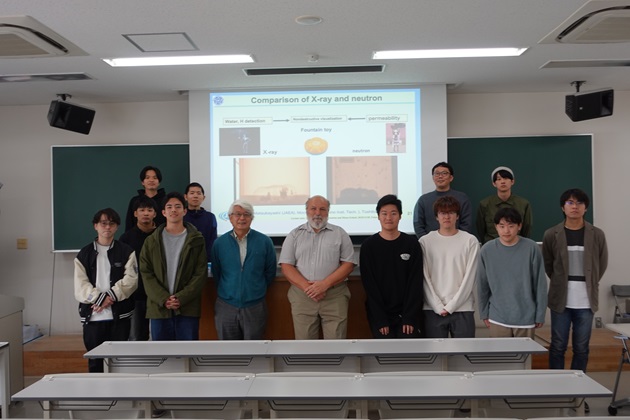
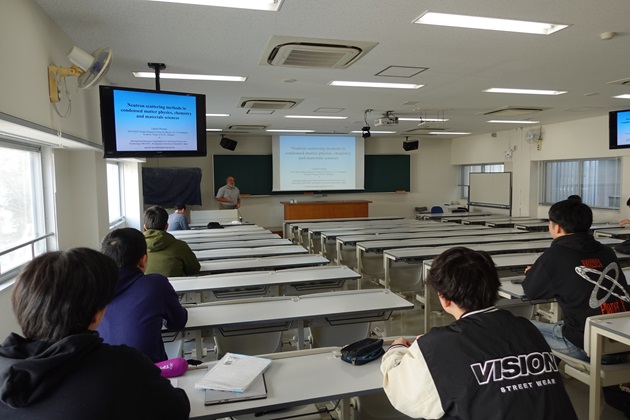
At the 136th IROAST seminar by Prof. Pusztai on 22th Nov.
・Professor Pusztai visited IROAST in September 2023 for discussing with the cluster members in Kumamoto University (See photograph below.).
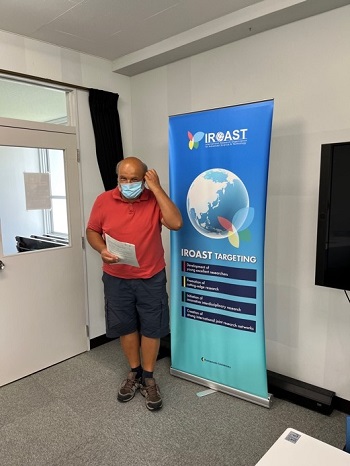
・By using internet connections, the cluster members discussed each other about scientific projects. As a result, four internationally coauthoring papers in the research cluster were published in journals.
1. Structural Properties of Chalcogenide Glasses and the Isocoordination Rule: Disentangling Effects from Chemistry and Network Topology
2. Phonon dispersion curves in the type-I crystalline and molten clathrate compound Eu8Ga16Ge30
3. Relationship between atomic structure and excellent glass forming ability in Pd42.5Ni7.5Cu30P20metallic glass
4. Structure Determination in a new Class of Amorphous Cluster Compounds with Extreme Nonlinear Optical Properties
・A new collaboration started with an Italian group, Prof. Di Cicco of University of Camerino on the developments of analytical methods for synchrotron radiation data.We carried out an international symposium at Kumamoto University in September on site, and some of the members visited them in December (See photograph below).
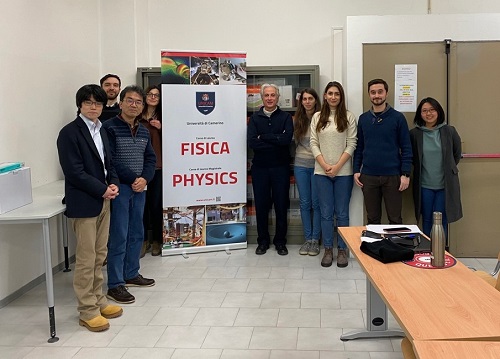
・Two young Japanese collaborators promoted to be post-doc researchers in other universities from April 2023.
・Professor Akai organized an educational program on the data science for doctoral students at Kumamoto University, other universities, and industrial company members to educate the Bayesian inference, Sparse modeling, and so on.
- Cluster of Young Researchers
-
- Ferroelectric Photovoltaics
- Next-Generation Design of Building Structures-DfX
- Low-Dimensional Molecular Electronics and Spintronics
- Development of extrachromosomal DNA control system for reprogramming drug-resistant cancer
- Development of Microbially-Aided Carbon Sequestration Technology
- Digital Plant Cell Biology
- Deep Learning for Hydrology
- Study of First-Generation Objects in the Universe with Radio Telescopes
- Separation, Synthesis, and Detection by Means of Ionic Solutes Handling
- Advanced Biomedical Evaluation System
- Environmentally Promising Processes for Medical and Skincare Nanomaterials
- Environmental Diagnosis on Earth Surface Systems
- Novel Cancer Medical Technology Using Liquid Biopsy
- Cluster of World-leading Researchers
-
- Development of Nano and Supramolecular Materials
- Plant Cell and Developmental Biology
- Nano-Organics and Nano-Hybrids
- Nano-medicine and Drug Delivery System
- Nano-medicine and Theranostics
- Structure and Dynamics of Materials Using Quantum Beams and Data-Driven Sciences
- Quantification of Three Dimensional Vascular Network
- Advanced Structural Materials
- Plant Stem Cells and Regeneration
- Microstructure Analysis and Grain Boundary Engineering
- Nano-materials for Energy Applications and Environmental Protection
- Micro- and Nanomechanics of Materials Science & Biological Systems






